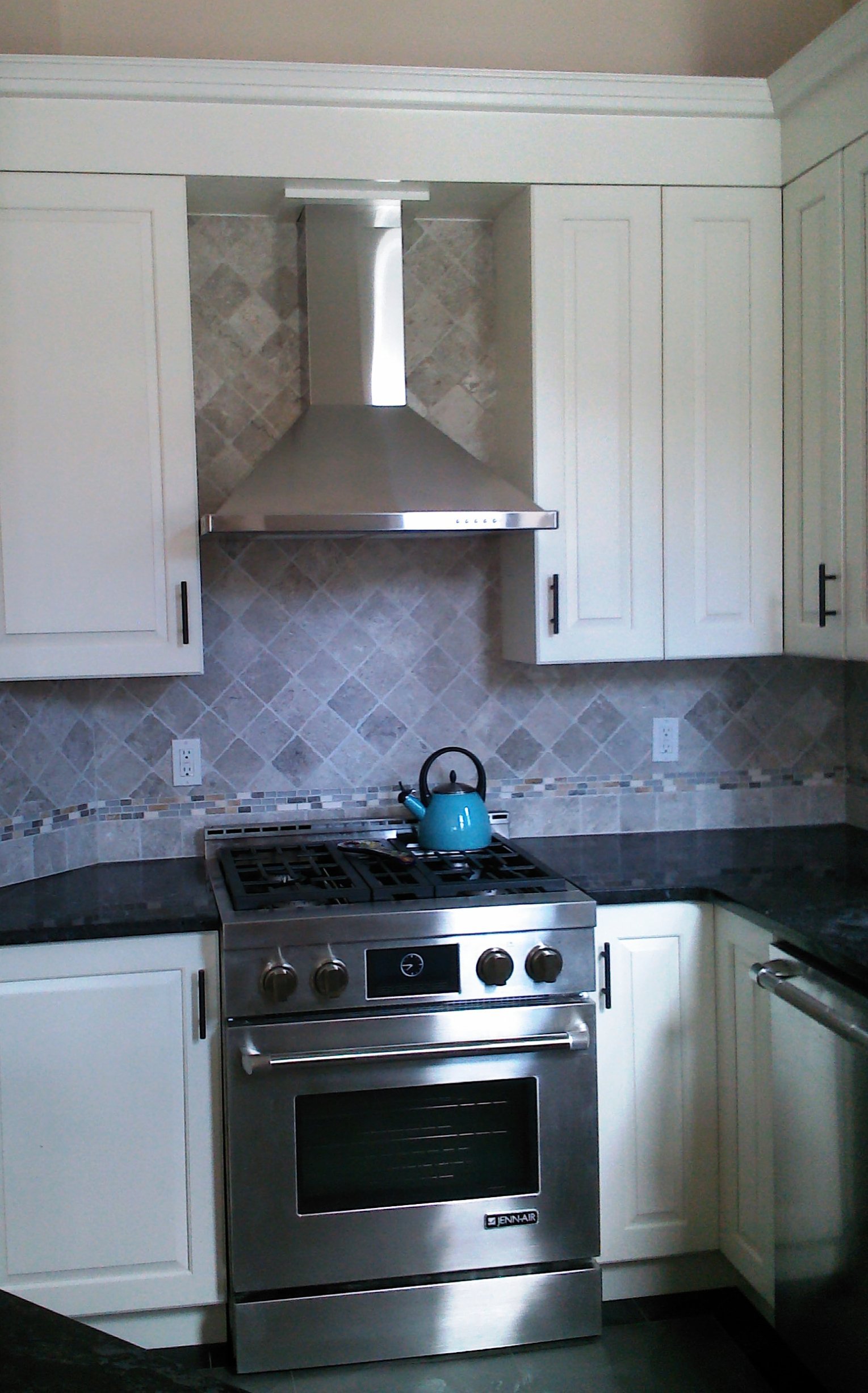Ventilation Hoods Kitchen - Freestanding hood
A freestanding hood is wall mounted and stands alone from the adjacent cabinetry. Can be made of metal, wood or plaster. Some of the fans are re-circulating, but most styles are vented to the outdoors, with the use of a motor. There are several types of motors to chose from:
A. Intergrated Blowers- These blowers are purchased separately and integrated into the hood at the time of installation. This option allows you to select your ideal hood with the exact power you require. These are not as powerful, rather noisy when on full speed. The only part visible is the ductwork cap which looks similar to a dryer vent. A helpful option for condo renovations. CFM = 600
B. Remote blower - when mounted on the roof, the ductwork runs a straight shot up from kitchen, however the duct work will cause you to lose some space on that upper level. Quietest option. If the roof location is not possible, the motor can be mounted on the side of the home. Locate away from windows and screen porches, or the smells may wander back in. CFM = 600 - 1000
C. Inline blowers - the blower is located along the ductwork. Must have access to this space. not as powerful, rather noisy when on full speed. The only part visible is the ductwork which looks similar to a dryer vent. A helpful option for condo renovations. CFM = 600 - 1000.
You must first figure out the correct cfm of the hood needed for your cooking surface. The requirements of the hood, called CFM, gets determined from the power of the cook top/range, called BTU’s. CFM, cubic feet per minute, is the amount of air that passes through the hood in a single minute. BTU, British thermal units, is a measurement of heat that needs to escape your home. One factor in determining the correct hood, is to chose one with the correct CFM you need. Add up all the BTU’s of your new cook top/range, and it then divide by 100, and the resultant is the amount of cfm for your new hood. Each type of hood has a dial to adjust the fan speed. My advice is to go with a higher cfm than necessary. The fan speed can always be lowered, but once you lock into a less capable fan, you can not gain the additional cfm after installation.
For the maintenance, filters and grills can be cleaned by removing and placing in the dishwasher. Metal exterior can be wiped down. Plaster hood would require vacuuming.

Freestanding Stainless Steel chimney hood
With this style hood, there are details that should be considered, such as the tile design. If the adjacent cabinetry does not reach the ceiling, there needs to be a way to stop the back splash tile, or you may end up tiling the whole wall. While that look can be beautiful, the tile can be expensive. Here, there was a minimum clearance of 30" to the underside of the hood and the metal ductwork cover could only extend to a to total height of 27". With the 10' ceiling, there was additional space above. For this design solution, we extended the crown and fascia trim so the tile can stop at that height as well.

Freestanding wood hood, made from the cabinetry
With this freestanding hood, there was no solution necessary for the backsplash tile. The only backsplash is the 4" high granite. The adjacent wall areas received the wall paint color. While this is a simpler, lighter look, I feel that the back wall will be covered with grease and tomato sauce, if someone were to use that high powered cooktop.
For more information, see related posts:
Ventilation Hoods Kitchen - Wood Kitchen Hoods
Ventilation Hoods Kitchen - Downdraft Venting
Download our Ebook!








